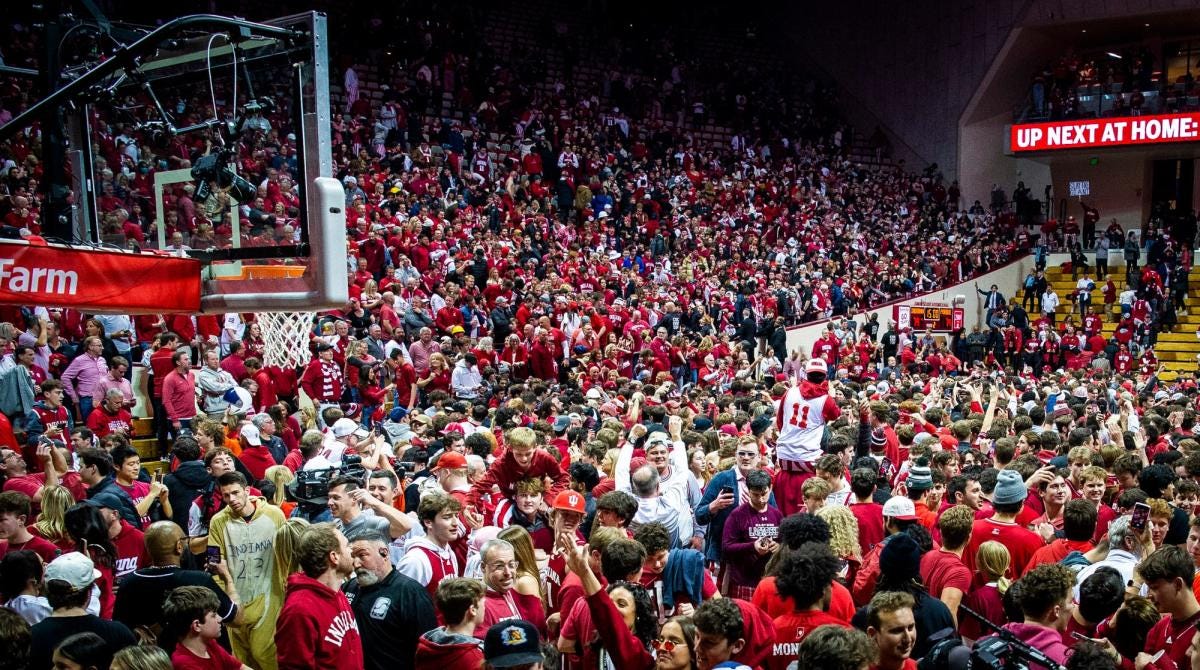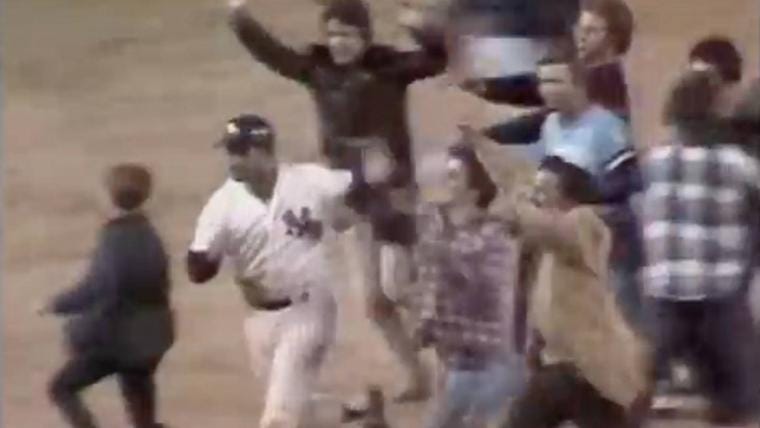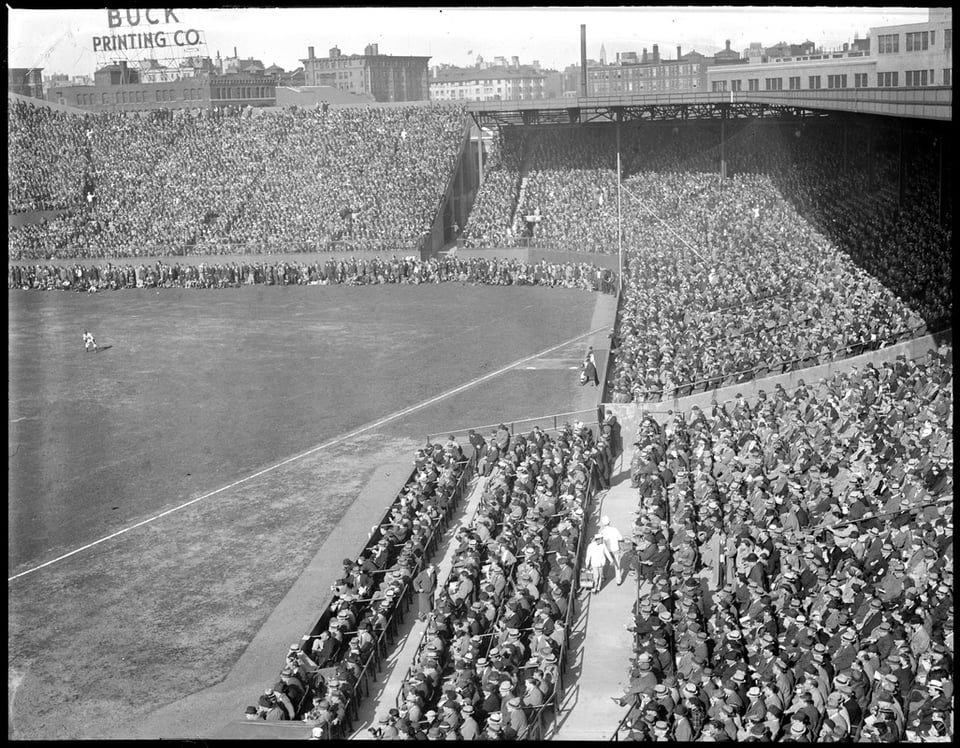I would like to speculate wildly about college basketball. We’re in the midst of March Madness right now, and it’s probably the most famous sustained period of attention paid to institutions of higher education in this country. There are plenty of questions worth asking about the role of sports in the American university, but here’s one I’m thinking about today:
Why do college students storm the court?
There’s a sort of ritual to court storming. It takes place
On a team’s home court
After that team has won a close game
Against a team that they have a traditional rivalry with OR
Against a team that is ranked much more highly than the home team
Then, following the final buzzer, the student section located courtside will pour forwards to celebrate with their team and with one another.
There are plenty of reasons this happens, not least that it makes for good photographs to demonstrate a dynamic student life for prospective tuition-payers. But I’d like to focus on those words I just bolded: students want to be with their team and one another. And, critically, that they see their team as an extension of themselves.
Why Basketball?
Part of the appeal of college sports is that you can view it as an extension of your own identity. As a student or alum from a college, you can identify with that place. It’s home, or at least it used to be. So when you see that university succeed, it’s easy to identify with a shared history, shared space, and shared brand.
This can appeal to all sorts of successes. It’s cool to see a faculty member from your institution win a prize. It can be cool to see your college start new programs or welcome more diverse classes or improve its graduation rate.
But those kinds of successes are often less obvious as they often don’t exist on a win-loss binary. But they’re also less obvious because they are less fun to watch.
The most exciting successes to watch are sports. They have clear winners and losers. And basketball is particularly primed for ritualized fan invasion because student sections are placed just feet away from the playing area with no barriers.
Football might be more popular overall, but it is less prone to invasions. The distance from stands to field is larger and it’s harder to get down on the field. But perhaps the biggest reason is that football fields are harder to fill. The court invasion is effective because the court is small; students can fill it all themselves. It can be a place that is saturated with the “we” of the student body.
We are here. We are happy. We won.
Who are We? Are They Us?
When students storm the court to celebrate with the players, it’s because they see the players as extensions of themselves. There’s a logic to this because every athlete must be enrolled as a student at the university, precisely the same status as those students cheering them on. It’s entirely possible that you could take a class with one of them. Or sit next to them in the dining hall. Or see them at a party. You’re peers, after all.
If storming students see themselves as celebrating alongside their fellow students, the next question must be whether the athletes see those storming students as “us” as well.
This is becoming salient as there has been more pressure lately to eliminate court storming. Basically, it’s seen as an injury risk, but I want to focus on one quote to examine another angle. This comes from Kyle Filipowski who was injured after a Wake Forest student rushed the court following an upset victory at home:
“Just trying to get my way off the court, and you know, you’ve got these crazy college students just doing whatever they want. It’s got to be a little more protective when things like that happen.”
The use of the phrase “these crazy college students” stands out, providing a distance of identity between himself, the college athlete, and the unpredictable otherness of college students. For the athletes, then, the “we” is the other athletes. Even if they’re technically students, “athlete” is their primary identity.
The onrushing mass, whose primary identity is “student,” hopes to find camaraderie in a shared “student” identity with the athlete. But the athlete does not recognize them as part of their “us.” Those whose primary identity is “athlete” do not share their sense of “we” with those cannot identify the same way.
If my musings have any basis in reality, then we are now in a transitional moment of disconnect. Athletes are starting to see court storming as abnormal or inappropriate, but fans still see it as normal.
So what might it look like for a shift like this to take place?
The Case of Baseball
Not so long ago, it used to be normal for fans to invade major league baseball fields. Think of Henry Aaron hitting his record-breaking 715th home run in 1974:
Who are those guys? They don’t belong there.
Or think of the 1976 ALCS where Chris Chambliss was unable to touch home after hitting a walk-off home run because of the invading fans.
I want to propose that baseball fans used to see players on their favorite teams as part of their “us.” By extension, fans felt that the stadium itself was “ours.” After all, it had not been so long ago that fans were allowed to sit on the field of play to watch:
This is a sport that began without fences; fans on the field was the norm for generations.
Now, one reason the trend stopped was increasing police presence on the field. That might prevent a few invaders from following someone’s home run trot, but it couldn’t stop 40,000 of them. So what changed?
Flood Fixing Fan Flooding
In 1972, Curt Flood brought a case against Major League Baseball to the Supreme Court. He was protesting the “reserve clause” system which severely limited players’ compensation and their ability to choose which teams they would play for.
The result of this suit was that by 1976, baseball had free agents. Players could solicit bids for their services from multiple teams, and their salaries started to balloon as a result.
I wonder whether this changed fan perceptions of players in two ways. First, with players being paid at much higher levels, it became harder for the average fan to recognize athletes as inhabiting a similar sphere in terms of economic class. Athletes were no longer “like us,” at least in terms of their income.
Second, players were no longer bound to their teams in the way fans felt bound to their teams. Before Flood’s lawsuit, teams could retain players indefinitely. The best players became icons of their franchise, and their lack of employment options felt like “loyalty” to fans. Players relocating themselves at will, by contrast, felt like “disloyalty.”
The combination made baseball players feel less like an “us” and more like a “them” to fans. Their differences started to make them unrecognizable to one another.
And it’s been over forty years since fans stormed the field.
The Athlete-Student
In recent years, it has become easier for athletes to transfer schools and those transfers no longer carry a penalty. Additionally, players can receive compensation via sponsorship payments for use of their name, image, or likeness. Some of the most famous college athletes, like Caitlin Clark, earn millions of dollars through these arrangements.
So when a player like Clark is potentially imperiled by court storming, it’s not just a risk to a college student, it’s a risk to a brand worth millions. This will prompt pressure to protect athletes by force, much like baseball started to do more seriously by 1980.
That’s an institutional response. But the fans may also start to respond to these changes. If they see college athletes as both rich and disloyal, perhaps it will be impossible for students to see those athletes as their peers any longer.
In that case, storming the court to celebrate with the greater “we” will not make sense. The “we” is in the stands, and we’ll stay there.
-Matt
P.S. Just for fun, here’s my favorite court storming of the year. A single fan cannot help but celebrate Detroit Mercy’s single win.








